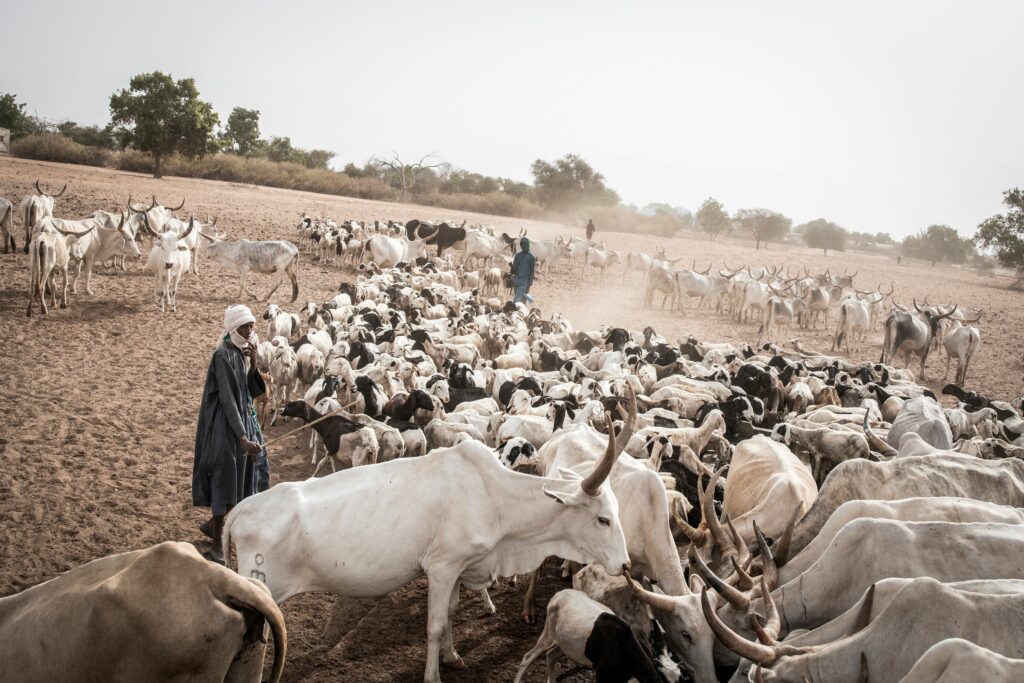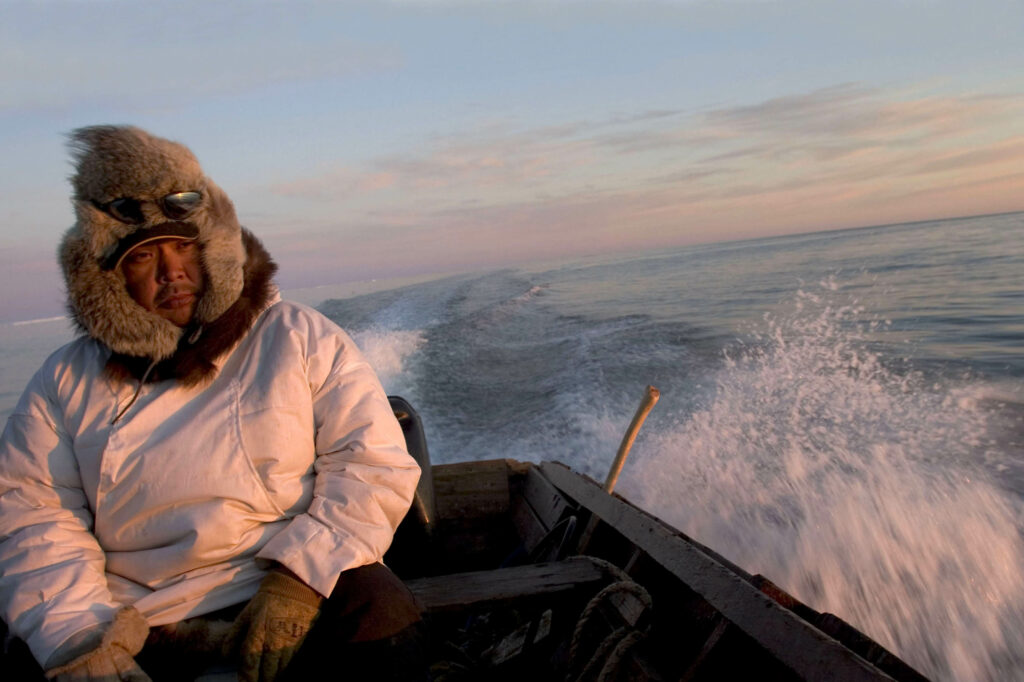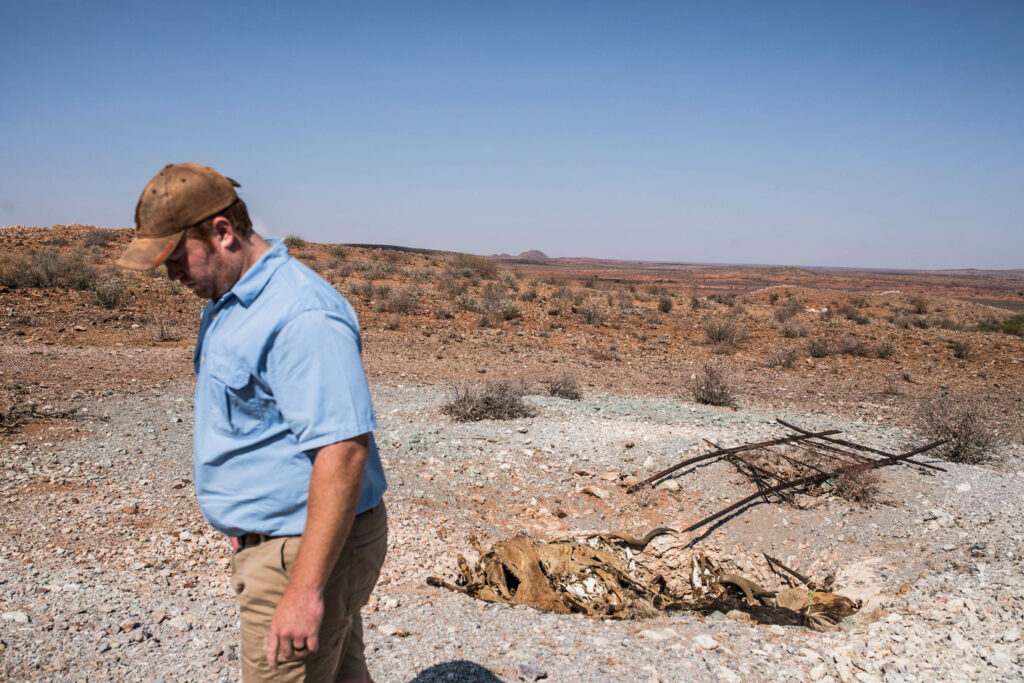People walk with their belongings in a flooded area after the Nile river overflowed after continuous heavy rain which caused thousands of people to be displaced in Bor, central South Sudan, on August 8, 2020. (Photo by Akuot Chol / AFP)
We are running out of time to save the world we so heavily rely on. The reality is now stark and the changes in climate and the environment are happening faster every day. Though there is no going back and fixing what we have done, we can certainly all take responsibility for our corner of the world to ensure we have a fighting chance. Changes to long-term weather patterns, agriculture and food security, water availability and biodiversity in South Africa mean that we can’t continue with business as usual.
What is climate change?
Long-term shifts in temperature and weather patterns. While these may be natural, since the 1800s human activities have been the main driver of the climate crisis, largely through burning fossil fuels such as coal, oil and gas, according to the UN. “Burning fossil fuels generates greenhouse gas emissions that act like a blanket wrapped around the earth, trapping the sun’s heat and raising temperatures.”
That the earth’s climate system has changed since the pre-industrial revolution, relative to the pre-industrial climate, is “beyond scientific doubt”, said Francois Engelbrecht, professor of climatology at the Global Change Institute at the University of the Witwatersrand in a recent report he authored, together with the late Bob Scholes, commissioned by the Centre for Environmental Rights.
Climate impacts
These include, but are not limited to, increases in the temperature over land and oceans and the rise in the sea level.
- Increase in near surface air temperature: The global mean surface temperature is estimated to have increased by 1.1°C for the period 2011-2020 relative to the period 1850-1904.
- Melting of ice caps: The loss in global ice mass on land has increased substantially over recent decades, including from the Greenland ice sheet, West Antarctic ice sheet and glaciers.
- Sea level rise: According to the Intergovernmental Panel on Climate Change, global mean sea level increased by 0.20 [0.15 to 0.25] m between 1901 and 2018. The average rate of sea-level rise was 1.3 [0.6 to 2.1] mm a year between 1901 and 1971, increasing to 1.9 [0.8 to 2.9] mm a year between 1971 and 2006, and further increasing to 3.7 [3.2 to 4.2] mm a year between 2006 and 2018. “Human influence was very likely the main driver of these increases at least since 1971,” it says.
Changes in every region of earth
In August, the Intergovernmental Panel on Climate Change (IPCC) described how scientists are observing changes in the earth’s climate in every region and across the whole climate system. Many of these changes are “unprecedented in thousands, if not hundreds of thousands of years”, and some already set in motion — such as continued sea level rise — are “irreversible over hundreds to thousands of years”.
Averaged over the next 20 years, global temperature is expected to reach or exceed 1.5°C of warming. For 1.5°C of global warming, the IPCC said, there will be increasing heatwaves, longer warm seasons and shorter cold seasons. At 2°C of global warming, heat extremes will more often reach critical tolerance thresholds for agriculture and health.
Beyond temperature, climate change is bringing multiple different changes in different regions, which will all increase with further warming. These include changes to wetness and dryness, to winds, snow and ice, coastal areas and oceans.
 Fulani herders lead their livestock to a water point in Dolly on May 30, 2020. – Dolly is a pastoral reserve where Fulani pastoralists can come as a refuge before heading back North as the first rains fall. COVID-19 coronavirus restrictions have closed down markets and regional movement, as a result Fulani herders are struggling to move to areas such as Dolly which have more grazing land and access to water. (Photo by JOHN WESSELS / AFP)
Fulani herders lead their livestock to a water point in Dolly on May 30, 2020. – Dolly is a pastoral reserve where Fulani pastoralists can come as a refuge before heading back North as the first rains fall. COVID-19 coronavirus restrictions have closed down markets and regional movement, as a result Fulani herders are struggling to move to areas such as Dolly which have more grazing land and access to water. (Photo by JOHN WESSELS / AFP)
Implications for southern Africa, a climate change hotspot
Southern Africa is an already warm and dry region, projected to become warmer and drier, and has “many demands on its institutions and finances in addition to climate change”, according to Engelbrecht and Scholes’ report. The region’s interior is rising at about twice the global rate of temperature increase, and is already 2°C warmer than a century ago.
“Global ‘low mitigation futures’ [mitigation refers to measures to stop climate change from getting worse] that lead to global mean warming well in excess of 3°C pose much higher risks to the future development of South Africa than ‘high mitigation futures’ which limit warming below 2°C.”
This, in turn, has higher risks than futures which stay below 1.5°C, or only briefly exceed it. The latter two futures require urgent and strenuous efforts to reduce greenhouse gas emissions, including by developing countries like South Africa, the scientists said.
 Inupiat Johnny Weyiouanna notices the ice getting thinner each year (Photo by Gilles Mingasson/Getty Images)
Inupiat Johnny Weyiouanna notices the ice getting thinner each year (Photo by Gilles Mingasson/Getty Images)
Collapse of key crops, freshwater
The maize crop, the region’s staple food, is likely to be substantially reduced — “even to the point of collapse” — under 3°C of global warming from the combined effects of high temperatures and drought. The livestock industry, too, will become unviable at 3°C of global warming, because of the negative effects of heat stress on wool, milk and meat production. The likelihood of long-duration droughts increases in the future, while the number, intensity and duration of heatwaves in South Africa will increase steeply in future.
Freshwater availability, already critically limited in southern Africa, will be reduced in future because of decreasing rainfall and increasing evaporation — impacts that will “amplify” as the level of global warming increases.
As the air temperature increases and flow in rivers decreases, the average temperature of surface water bodies rises, leading to a deterioration in water quality, increasing the risk of waterborne diseases such as diarrhoea, “particularly among the large fraction of people in South Africa who remain dependent on untreated or inadequately treated water resources for their domestic needs”.
 Burger Schoeman says many animals have died from drought at the Thuru Lodge game farm. (Photo by GUILLEM SARTORIO/AFP via Getty Images)
Burger Schoeman says many animals have died from drought at the Thuru Lodge game farm. (Photo by GUILLEM SARTORIO/AFP via Getty Images)
Extinction threat to green economy
South Africa is one of 17 mega-biodiverse countries, with Scholes and Engelbrecht describing how the emerging green economy is built on this biological richness and diversity.
“Human wellbeing depends fundamentally on the continued existence of well-functioning ecosystems to provide services such as clean water, breathable air, a regulated climate and control of pests and diseases. Particularly under circumstances of a changing climate, the reliability of ecosystem functioning depends on having a large and diverse pool of organisms to draw on.”
Currently, 14% of the country’s plants, 17% of mammals and 15% of birds are classified as threatened with extinction. The risk rises ever more steeply with climate change, worsened by air pollution and water shortages.
“Wild species have adapted to past climate changes, though not without substantial waves of extinction. Anthropogenic climate change is a bigger challenge, because it is very rapid, and the fragmentation of habitats by human activities means that organisms cannot easily migrate to areas of more favourable climate.”
Charlotte McBride, the manager of climate data at the South African Weather Service, said there is a real need to address climate change and for governments and the public to play “their part in reducing their carbon footprint”.
“This will include making use of renewable energy sources, saving water, recycling, eating less meat, supporting locally grown produce and supporting tree planting initiatives.”